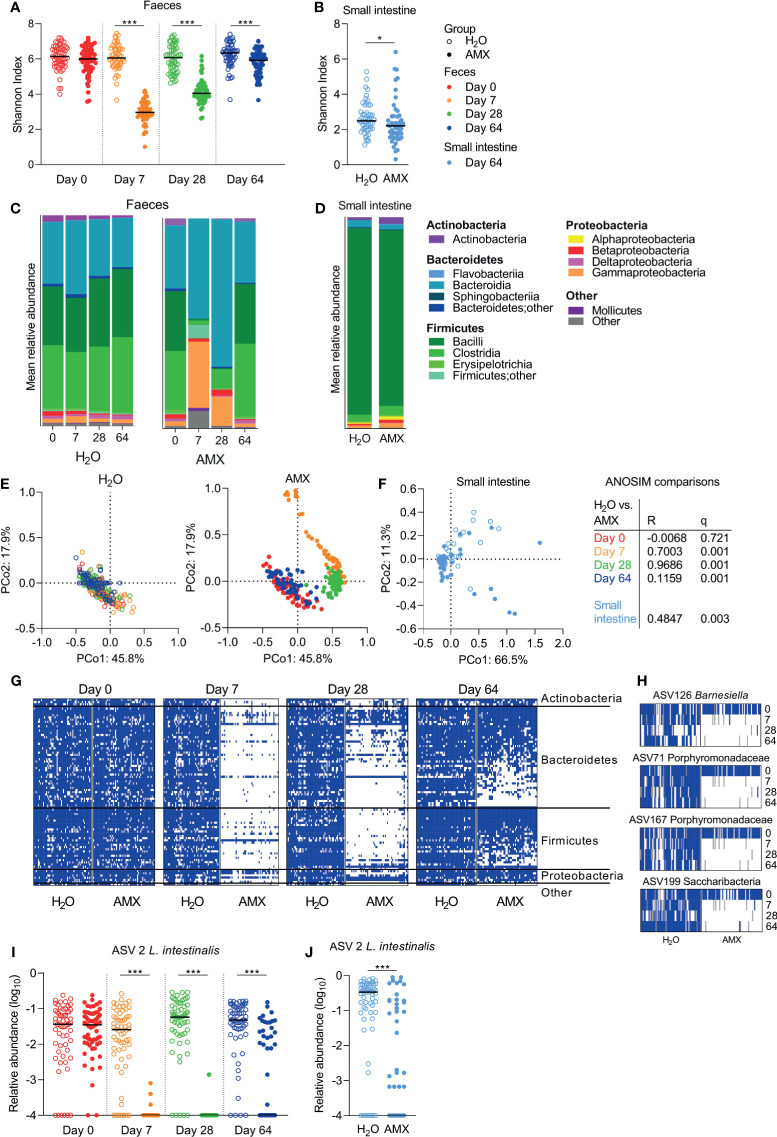Figure 4.
Effects of amoxicillin on faecal and small intestine microbiota. Shannon diversity index of faecal (A) and small intestinal (B) microbiota of conventional (H2O, open symbols) and amoxicillin (AMX, closed symbols) groups. Mean relative abundance of bacterial classes in faecal (C) and small intestinal (D) microbiota. Principal coordinate analysis (PCoA) plots of weighted UniFrac distances in faecal (E) and small intestinal (F) samples are coloured according to sample day. Pairwise comparisons between the H2O and AMX groups at different days in faeces and in small intestine by analysis of similarities (ANOSIM). Presence/absence status of the most prevalent amplicon sequencing variant (ASVs), present in ≥75% of the rats on Day 0, in the faecal samples at different days (G). Presence (blue)/absence (white)/missing data (grey) status of four ASVs at different days (H). Relative abundance of Lactobacillus intestinalis in faecal (I) and small intestinal (J) microbiota. Each symbol represents a single rat and horizontal lines indicate median (A, B, H, I) values. Statistically significant differences between groups are indicated as *p ≤ 0.05, ***p ≤ 0.001.

